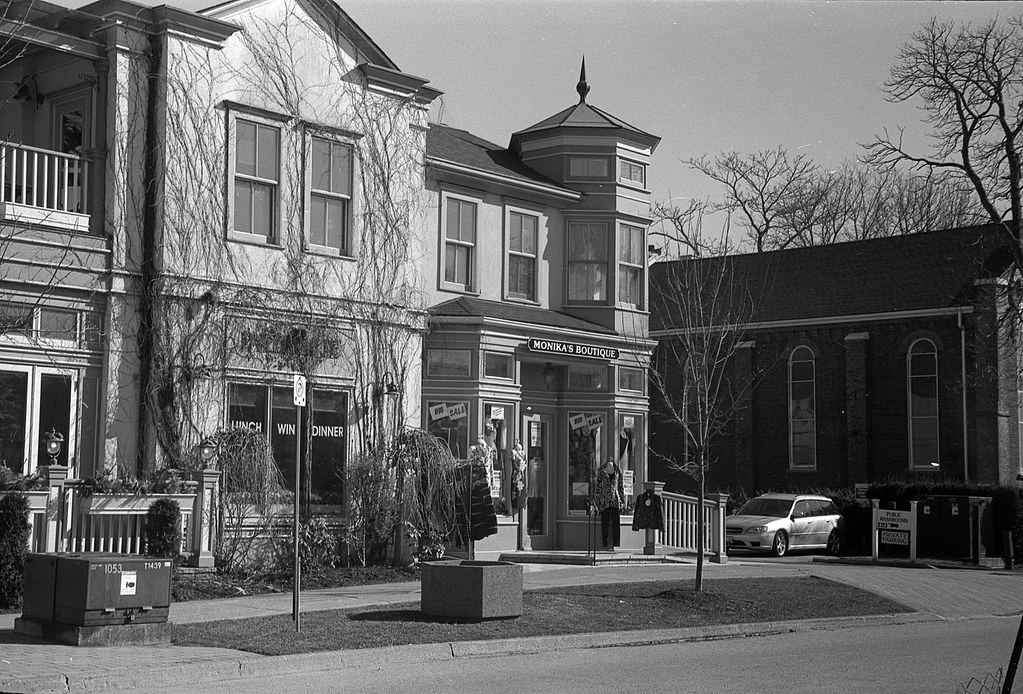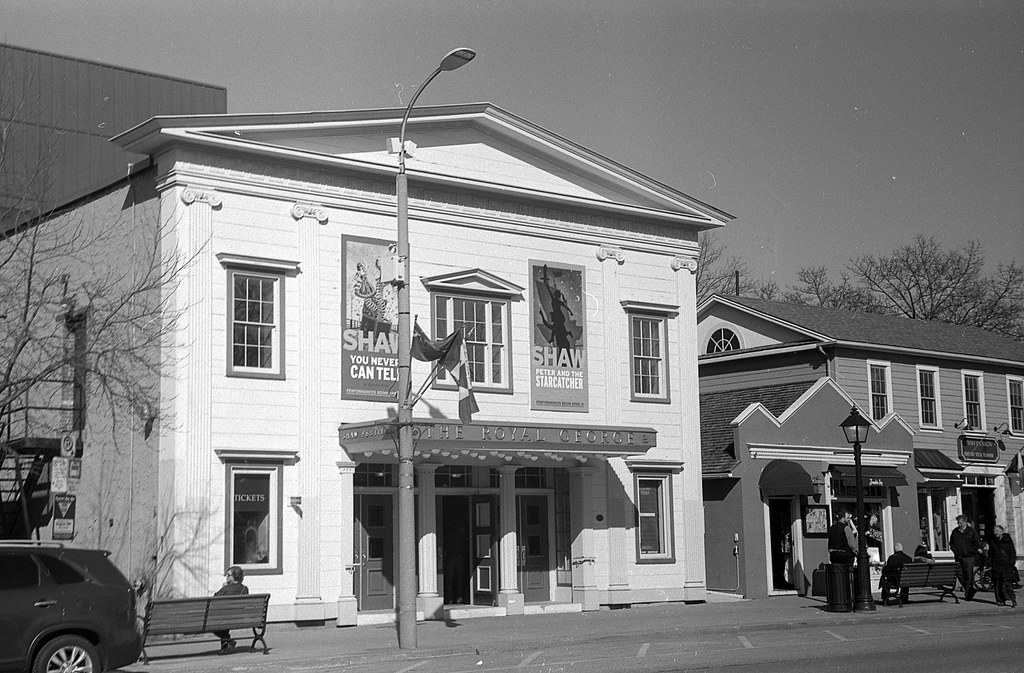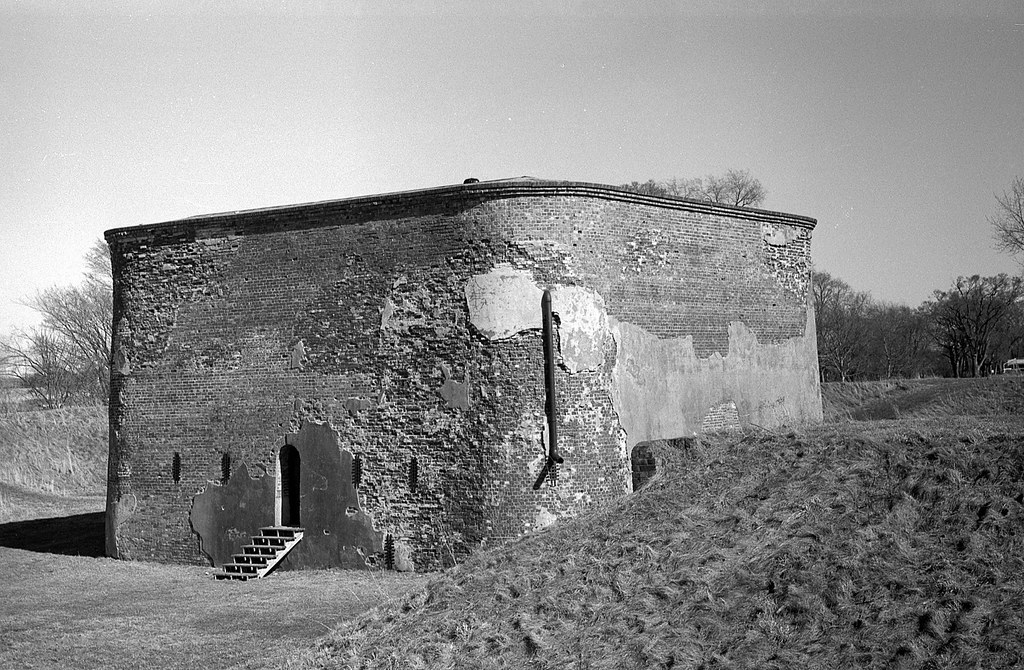What is it about Soviet-made cameras that attract such a cult following? I mean they are notorious for breaking, or just being of poor quality right off the factory line. But what is the mark of quality? For the West, we look at cameras such as the Leica and Hasselblad which are precision built cameras with a great deal of research, development, and quality checks before they get into the hands of photographers. But for the Soviets, it was something that could be quickly built, easily repaired, and put into everyone’s hand. And the FED-2 has that mark of quality. But these were far cries from the plastic cameras that came out later in the Soviet industry. The FED-2 is a camera that begs to be used and in many ways is slightly better than the Barnack era Leicas. Thanks to Mike Bitaxi for loaning out his FED-2 for review.

Camera Specifications
Make: F.E. Dzerzhinsky Commune
Model: FED-2 (ФЭД-2)
Type: Rangefinder
Format: 135 (35mm) 36x24mm
Lens: Interchangeable, M39 Mount
Shutter: Cloth Horizontal Travel focal-plane Shutter, 1/30″ – 1/500″ + B
Year of Manufacture: 1955-1970


Background
You don’t often consider a Soviet camera to be a major point in photographic history. But that is exactly where the FED cameras lay, you see, the FED marked the beginnings of a domestic camera industry. The Russian empire had no photographic industry. It did not have much of an industrial base; it was only in the days leading up to the Great War that some level of industrialisation came to the mighty empire. Out of the chaos of the Great War, the Russian Revolution, and the Russian Civil War, came many displaced by multiple conflicts that savaged the area and eventually the creation of the USSR. To deal with many of the war orphans, Labour Communes were set up to provide jobs and more importantly teach skills. One of these communes, the F. E. Dzerzhinsky Labour Commune in Kharkov, Ukraine, taught skilled trades. The commune, named for the founder of the Soviet Secret Police (the precursor organisation to the NKVD), Filex Edumdovich Kzerzkinsky. The Soviet government put one of their best chiefs to lead the commune. Anton Semyonovich Makarenko, who had made a name for himself leading another commune that handled agricultural skills and was known more for his role in education in the Soviet state than photography. Makarenko focused on trade skills, carpentry, shoemaking, and sewing. The addition of a machine shop saw the products begin to include drills and sewing machines. The FED factory produced the first electric drill in the USSR. But the shop could also produce something else, cameras. These first cameras were direct copies of the Leica A with VOOMP produced lenses, but it was a huge leap forward and earned praise in the Soviet media. Stalin urged FED to produce more and better cameras. Only 300 of these early cameras were produced as in 1933 the Leica II with a coupled rangefinder saw release to the public. The factory began to output the FED (ФЭД) camera, a direct copy of the Leica II and even began to produce their lenses for the camera. These early cameras, known as FED NKVD, were almost exact copies. But due to limitations in manufacturing tools, the thread pitch on the M39 mount and flange distance were different on the FED to the Leica. But FED also produced some top plates that had not only the FED markings but Leica markings also. These counterfeit Leica cameras were discovered during the Nazi occupation of Kharkov during World War Two. During the war and occupation, the factory continued to produce cameras. In 1946 the factory gained the tooling needed to produce better cameras that matched the thread pitch of the lens mount and the flang depth of the M39 mount, these post-war cameras became the FED-1. Production of the FED-1 lasted until 1955. That year saw the release of the new FED-2. No longer a direct Leica copy, the FED-2 still had that appearance of being inspired by the Barnack Leica but had several changes. The rangefinder and viewfinder were integrated into a single window, the body diecast, and had a massive rangefinder base of 67mm. Production of the Fed-2a lasted for a year, before the 1956 release of the Fed-2b which added a flash sync port and an improved shutter speed dial. The later released Fed-2b featured an Industar-26m 50mm f/2.8 lens and the move away from Optics by the FED factory. The Fed-2c in 1958 moved the location of the sync port and modified the film advance dial. International shutter speeds were put into the Fed-2d in 1959 and western script export models were produced. A sub-variant of the 2d, known as the 2L, used an Industar-61L lens which featured radioactive coatings on the elements. The Fed-2d proved the longest production model of the Fed-2, lasting nearly a decade. The final model of the Fed-2, known as the Fed-2e, is based on the Fed-3 design. The Fed-2e, released in 1969, was a budget model of the Fed-3b and featured the same body style but lacked the slow shutter speeds. Production of the Fed-2e ended in 1970.


Impressions
It does look like a Leica. And at forty yards you may even mistake it for one. But the Fed-2 is not a Leica. But there’s a strange draw towards the camera. Its heavy die-cast body could kill a man if used as a weapon and probably still work afterwards. The first thing you’ll notice is the big viewfinder, and it is big and has a decent-sized rangefinder patch. I’m unsure on which variant of the Fed-2 I have to review, but everything about it is industrial. From the large knurled film advance, rewind, and shutter speed dial. Surprisingly everything is in the right place and is fairly easy to use. A single shutter speed dial controls all the speeds, and you have to pull up to unlock the knob to allow it to move between the speeds freely. The film advance is heavy, and it takes a couple of rotations to advance the film fully, but nothing out of the ordinary for cameras of the era. I mean it’s no different than my Contax IIIa and Leica IIIc rangefinders. Another excellent feature is the diopter leaver which certainly helps keep the viewfinder in focus to help with focusing the lens.


Experiences
When compared to the Leica’s of the day, that being the Barnack Leica’s the Fed-2 is a dream to use, well after a fashion. While the Leica was designed for the professional and dedicated photographer, the Fed-2 is designed to put cameras in the hands of the general population. A very Soviet ideal. And the Fed-2 takes a lot of functionality surrounding the loading of film from the Contax series of rangefinders. You remove the whole back of the camera to load the film. Difficult to do quickly in the field and you need a couple of hands and even a pocket maybe to get it done. It certainly is easier than drop-in loading you had with Barnack Leicas and a little less frustrating in the process. Operating the camera is straight forward, the shutter release is big, and in your face, the various controls on the camera body are easily manipulated. While the film advance is a bit of a pain, it’s nothing compared to the shutter speed dial. There’s a flaw in these early designs. You should not change the shutter speed until you have advanced the film. If you don’t, there could be a repair in the future for your camera. What surprises me the most is that the camera uses an integrated viewfinder and rangefinder, no more having to peek through a tiny window to focus and another window to compose. Now everything is in one big bright window, and the patch is surprisingly bright and makes it easy to focus the images. Of course, there’s nothing in the way of frame lines which makes like a little difficult, but if you’re used to such cameras, you won’t have too much difficulty with parallax error. Rewinding is a bit of a pain as well, but nothing overly difficult. Now the camera is heavier than it looks, certainly not one for the pocket, I do suggest a strap if you’re carrying it around for an extended period.


Optics
Don’t knock them until you try them, is what I have to say about the Soviet Optics. Having shot both Industar and Jupiter optics with the camera, I can honestly say that the lenses are fantastic. While you might run into trouble mounting your favourite Leitz or Zeiss M39 lens on the camera due to a different shape in the rangefinder cam, using Soviet lenses on the camera is perfect. I find that I prefer the Jupiter optics, being copies of Zeiss glass. The Jupiter-8 50mm f/2.8 is a copy of the Sonar design found on pre-war Contax cameras. Although the Industar is no slouch either being copies of Leitz optics. The Industar-22 is a copy of the Elmar and an excellent choice as well. Just be careful when mounting or dismounting the lenses as the cam is easily knocked out of alignment and would need to be adjusted, which surprisingly is not an easy task to complete. There are old lenses made by FED, but these might see difficulty mounting as the thread pitch is a little different.


Lowdown
There’s nothing wrong with the Fed-2, I would aim to get either a Fed-2c or Fed-2d models as these were pretty much the peeked of the Fed-2 line when they had everything pretty much nailed. Of course, like any Soviet camera, it is buyer beware. These cameras are getting old and do suffer a bit from that age. One of the biggest concern is the shutter curtain which is prone to pinholing. Smaller holes can be patched using the Sharpie method (not sure how…but it works) although with larger ones it might be better to get a new camera. And the best part is that they are cheap on the used market with most going for well under 100$, my cursory search showing a range from as low as 25$ and up to 75$ and that’s with a lens. So if you’re looking to try out cameras of that era, or have a love for Soviet cameras, then I highly recommend the Fed-2.


Further Reading
Don’t just take my word on the ФЭД-2, you can check out the reviews by other awesome camera reviewers!
Mike Eckman Dot Com – Fed-2c Review
Camera Go Camera – FED-2 Review
Matt’s Classic Cameras – FED-2 Review
Vintage Camera Labs – FED-2
Lomography – FED-2 Staff Review
Neil Kohl – FED-2 Review
Peek Overload – FED-2 Review
Fun with Cameras – More GAS from the East, the FED-2
1 Comment